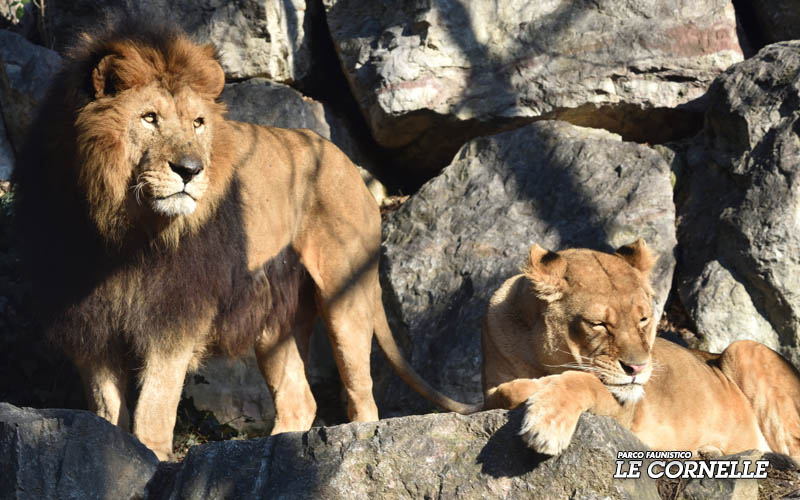-
Common Name:
LIONScientific name:
Panthera leoClass:
MammalsOrder:
CarnivoraFamily:
FelidiProvenance:
South-Saharian African – AsiaDiet:
meatHabitat:
Meadows, ForestsReproduction:
110 days, 1-4 Puppies for birth -
Lives in savannah and in meadow, but it can also adapt to bushy areas and forests. It lives almost exclusively in the sub-Saharan Africa. A notably smaller population survives in the forest of the Gir National Park, India. The examples that used to live in North Africa and in the Middle East area, disappeared many centuries ago. The lion is one of the biggest felines. Males can weigh between 150 and 260 kilos, and females weigh between 120 and 182 kilos. Their body length, tail excluded, vary from 170 to 250 cm (males) and from 140 to 175 cm (females); the height at the withers is about 105-120 cm. The tail ends with a furry tuft, and it is 70-100 cm on the average.
The color of the fur, tones down through yellow and ocher brown, reaching the reddish and the ivory color of the inferior parts of its body. The mane, the most evident proof of sexual dysmorphism, varies from blond to dark brown. Puppies are born with spotted fur. As they grow up, spots blend in color until they disappear, sometimes they remain slightly visible on paws and stomach.
They are carnivorous, and their daily meat requirement can reach 5-7 kilos. They are able to swallow up to 30 kilos of meat in just one hunt. Females hunt in herds, especially ungulates. Their favorite preys are big mammals: gnus, zebras, buffalos, impalas, and warthogs in the African area; bluebucks, boars and several species of deer in the Indian area.
These animals are endowed with a strong sociability. A herd is generally composed of a male, a group of females related to each other, and their offspring. Male puppies stay in the herd until they achieve sexual maturity, then they are taken away from their father. Lions tend to dominate other smaller felines such as cheetahs or leopards where ranges overlap, stealing their preys and killing their puppies.
Mating can happen in different seasons. The gestation last 110 days on the average, and the female gives birth from 1 to 4 puppies in a hidden place. The puppies have to face numerous dangers, like the predation of jackals, hyenas and leopards. We can evaluate that about the 80% of lion puppies do not reach two years. The International Union for Conservation of Nature (IUCN) considers the species as vulnerable in Africa and as critically endangered in Asia. The causes are due to the continuous impoverishment of its natural habitat and to illegal hunting.
Member Of















